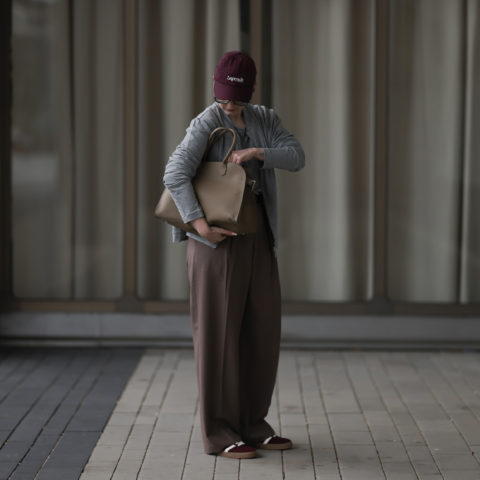How One Writer Learned Crafting is a Form of Meditation
"Social conditioning teaches us that knitting is a throwaway, insular, feminized hobby without much bearing on the real world"
There’s an old wives’ tale in the knitting community: if you spend the requisite time and effort knitting your significant other a sweater, you will almost certainly break up. The Curse of the Boyfriend Sweater, out today, by senior editor at Racked, Alanna Okun, chronicles how her lifelong hobby weaves in and out of relationships with family, friends and lovers, and demonstrates how crafting can be both a life skill and a life saver. Even if you don’t fancy yourself particularly crafty, it’s still a delightful read that manages to translate the pure joy of creating an object from scratch. You might even find yourself tempted to clack a set of knitting needles together until you’ve produced something tangible, meaningful and brand new.
We caught up with Alanna Okun in advance of her book to discern her thoughts on the stereotypes that plague the knitting community, crafting’s relationship with mental health and more.

Photography Courtesy of Flatiron Books
The most persistent trope about knitting is that it’s ‘Not Just For Grandmas(TM)’ as you call it in your book. Why do you think this pesky stereotype refuses to go away?
I think partly laziness, partly sexism, and partly ageism! But mostly laziness, honestly; I don’t think most people think they’re being offensive or annoying when they declare that knitting “isn’t just for grandmas!!!!” anymore, but are, rather, falling back on the litany of pop culture references and social conditioning that teaches us that knitting is a throwaway, insular, feminized hobby without much bearing on the real world. And I wrote this in the book, but my least favorite part of the whole shebang is how it disrespects grandmas, who collectively rule.
What is it that separates crafters from the rest of us? Saintly patience? Extreme hand-eye coordination?
I truly believe that anyone can become a crafter, up to and including people who claim that they’re just not that crafty. I think you have to want the end product enough, and you definitely do need patience, but most of all you have to be okay with being bad at something for a little while before, one day, you’re good. This is kind of hard to swallow, especially as an adult, but I think it’s what makes learning a new skill like crafting so special.
Obviously crafting is by no means a lost art, but it does stand to reason that it’s a unique hobby for a millennial. What is it that keeps you so firmly affixed to your knitting needles?
There’s a bunch of us who walk among the rest of you! That’s actually one of my favorite parts of crafting, particularly the more fiber-focused pursuits (like knitting, crochet, and embroidery) — the sense of community, and the people who pop out of the woodwork on Twitter or in choir practice or in the office to say either “hey, I can do that!” or “hey, will you teach me that?” They’re drawn to it often for the same reasons I am — the calming rhythms, the tactility, the portability — and for different ones entirely, which I’m always stoked to hear about.
The book focuses a lot on crafting and its relationship to mental health. How do you find the two subjects fit together?
SO WELL. I once took a meditation lesson and realized that the intentions were eerily similar to how I feel when I really get in the zone crafting-wise: you can’t fret about what’s ahead or keep going back over what’s already happened, so all you can do is focus on the stitch right in front of you in that moment, and you can make the whole trip that way. I wish I were more able to translate this type of thinking in my day to day life; I have terrible bouts of anxiety, which lately has been accompanied by a fun new strain of depression, and if only crafting could cure those outright…! But even if I just take the time to work a couple of rows in the morning, or on the subway or during a meeting at work, it can help bring me back to myself, and to remind me that I am capable of bringing something into the world that wasn’t there before, so it stands to reason that some things will turn out okay.
Why do you think knitting serves as this temporary calming device?
It’s a series of tiny problems to be solved over and over and over again, and that helps you feel like maybe you’re capable of solving bigger problems too.
What is your favourite life experience that has come out of learning to craft?
This is so cheesy, but writing this book. Crafting has been my constant companion and also a pretty handy metaphor, and to be able to have the time and space to sit down and sift through it all and (hopefully) make it legible for other readers was the best project I’ve ever had the opportunity to make. Same motions as a sweater, really, just smaller and harder (both in difficulty and corporeal form); something that comes from me but will go on to have a life without me, which is exactly as it should be.








